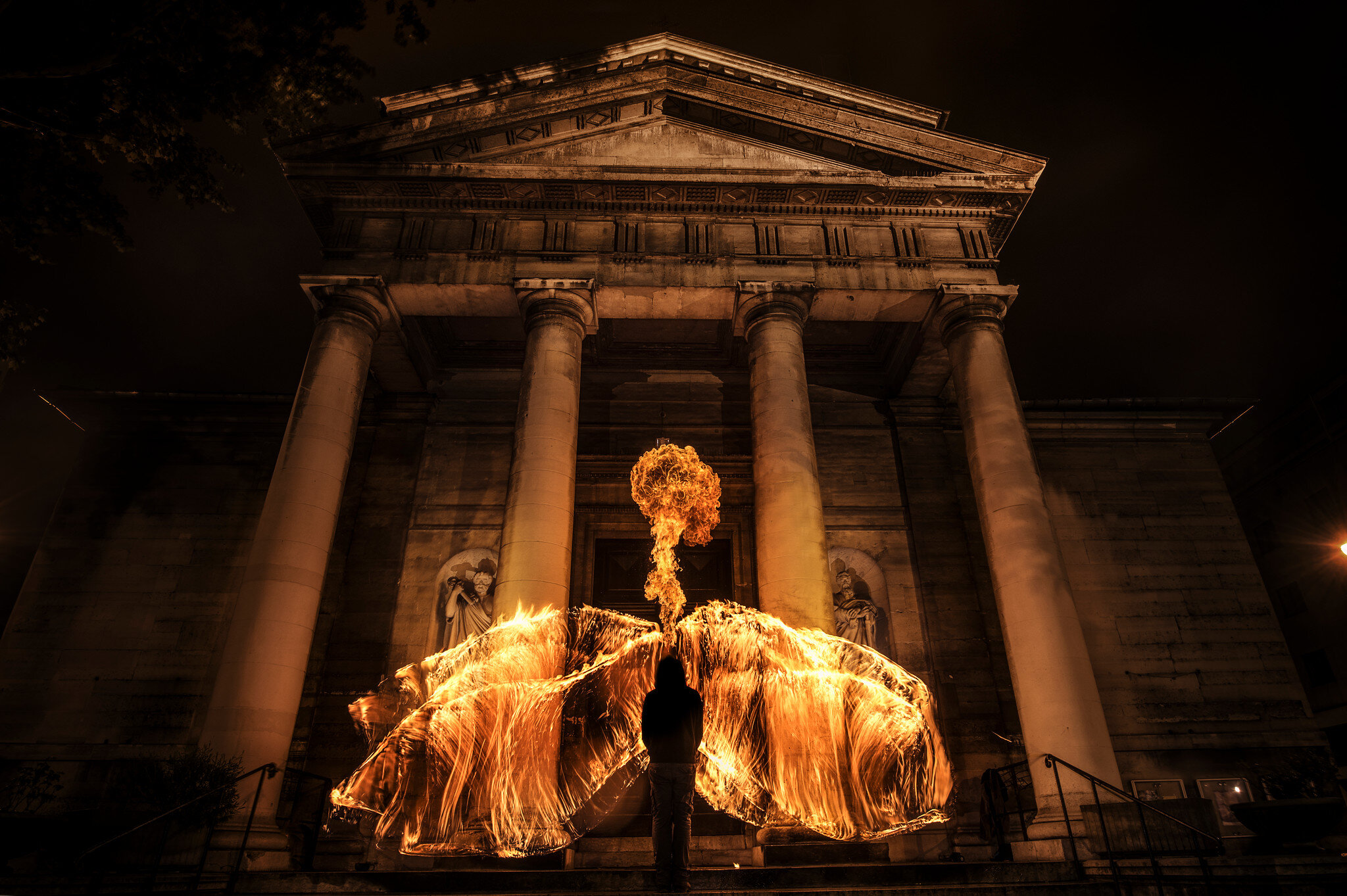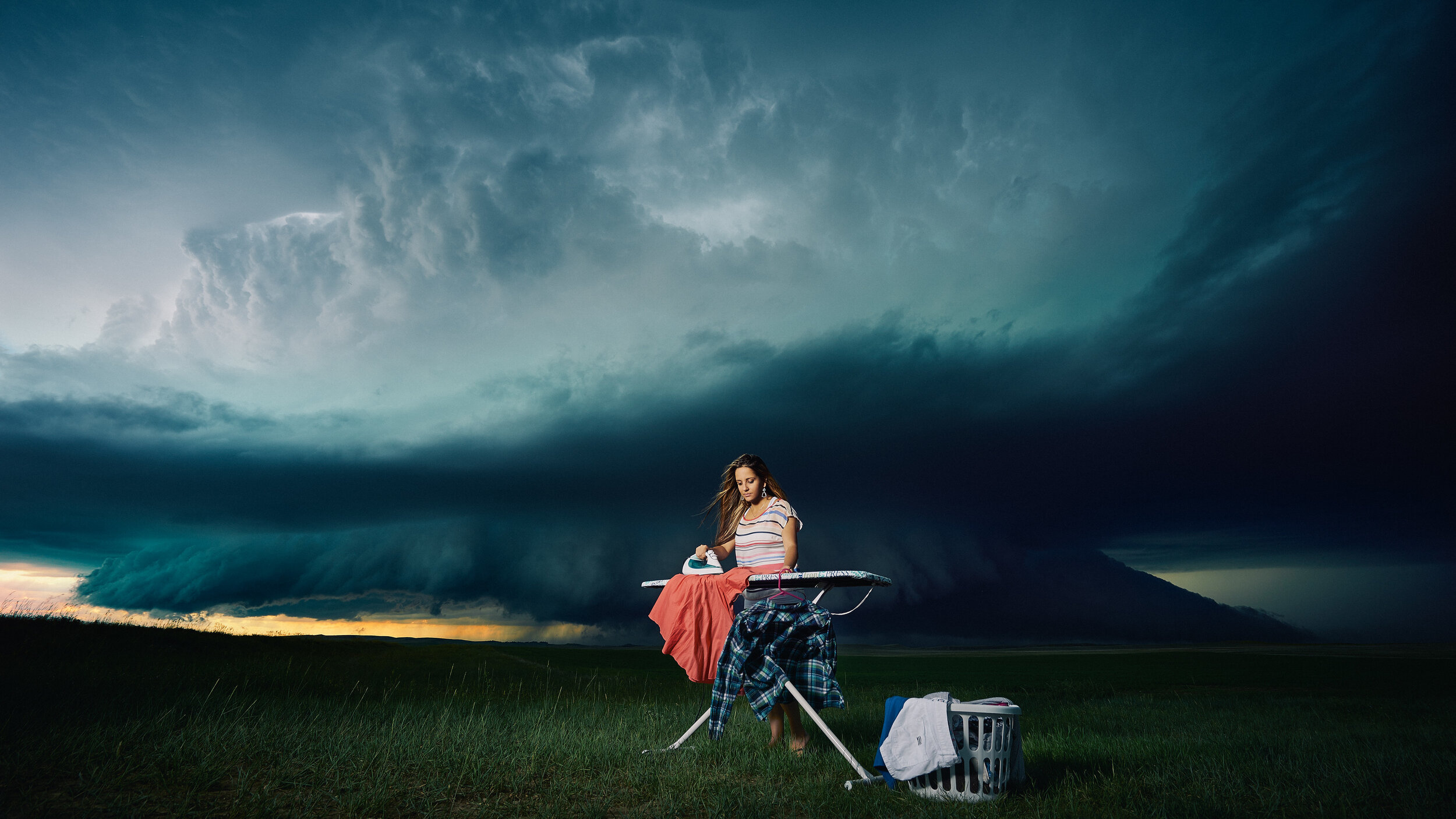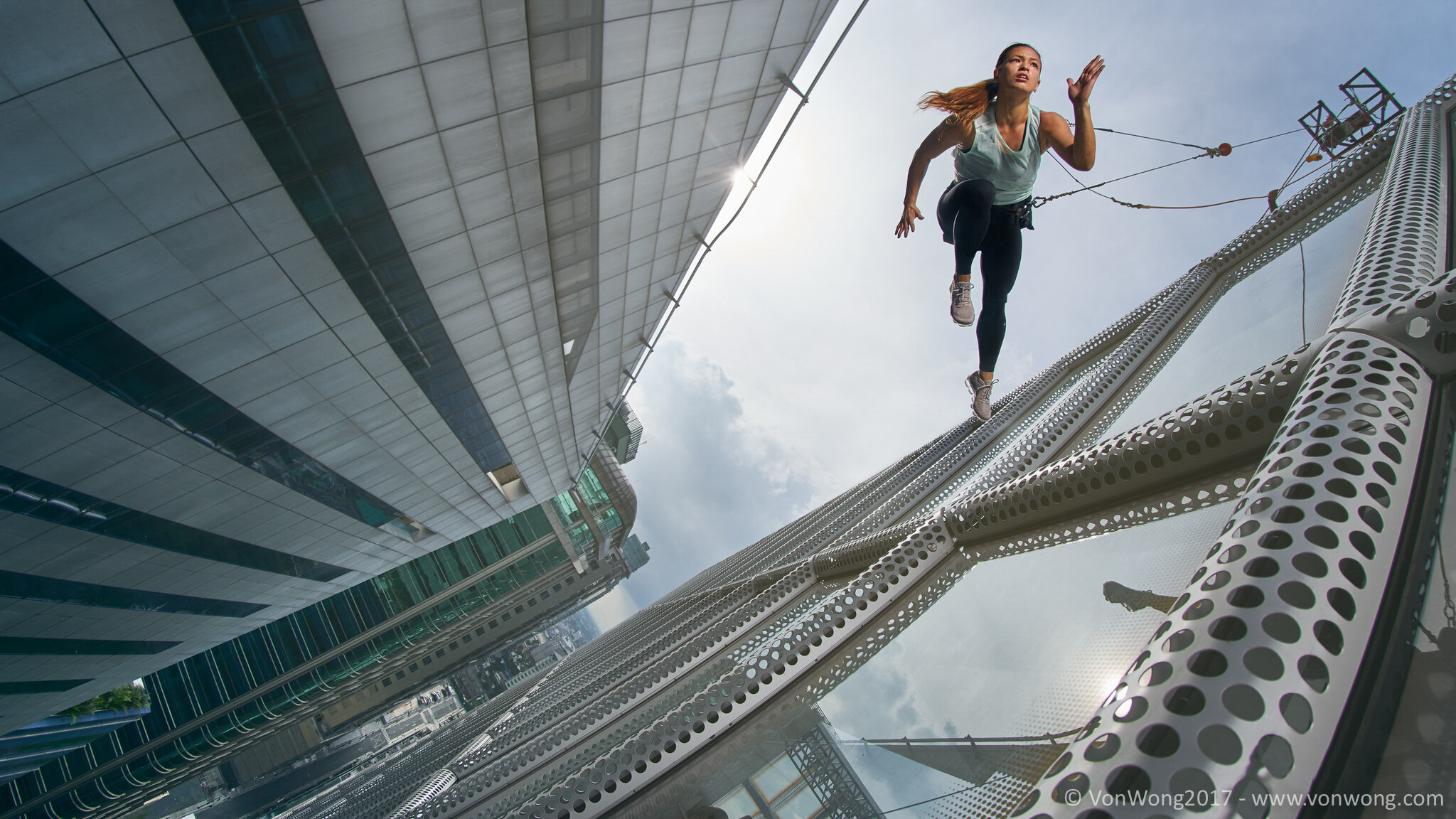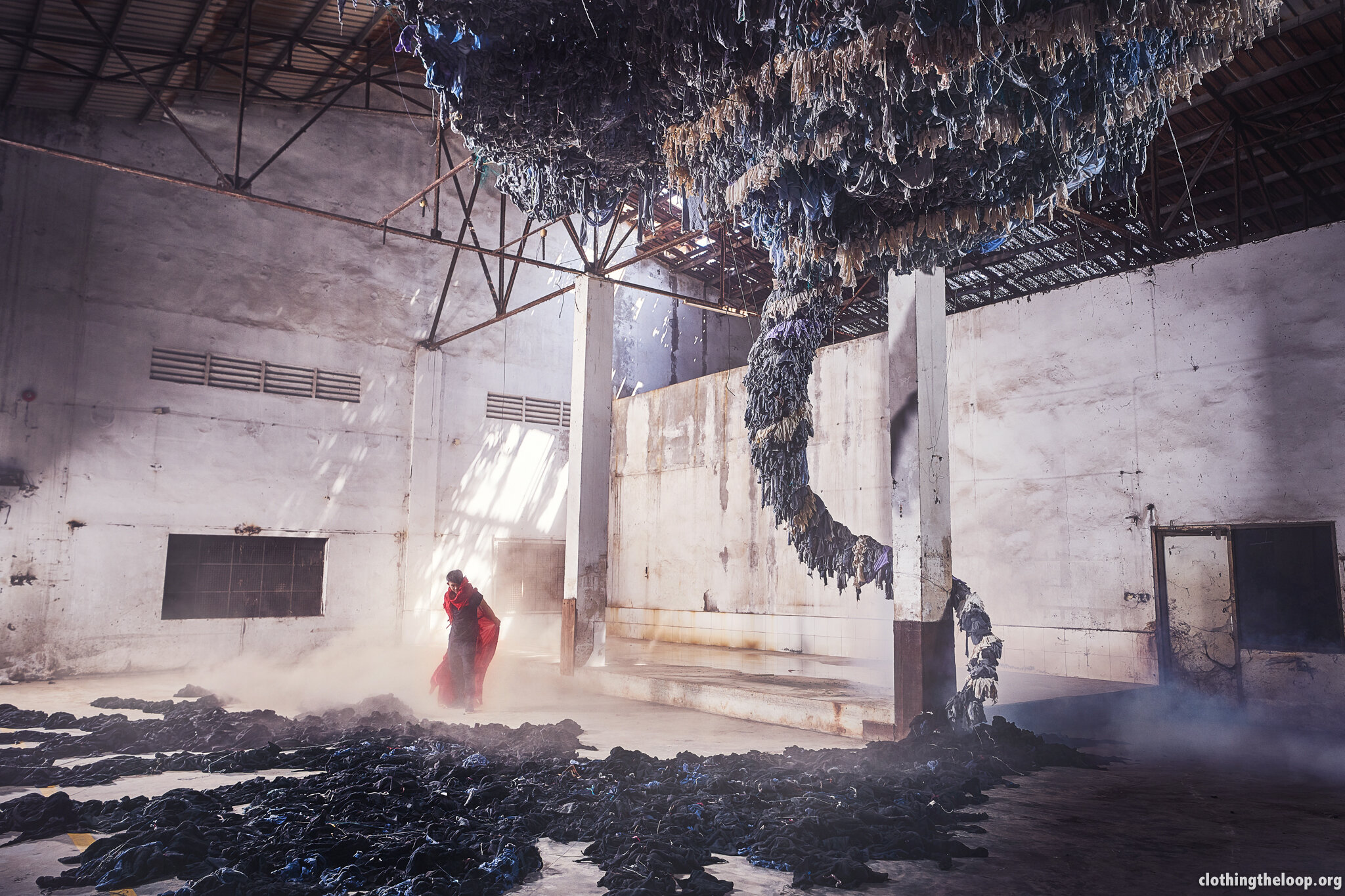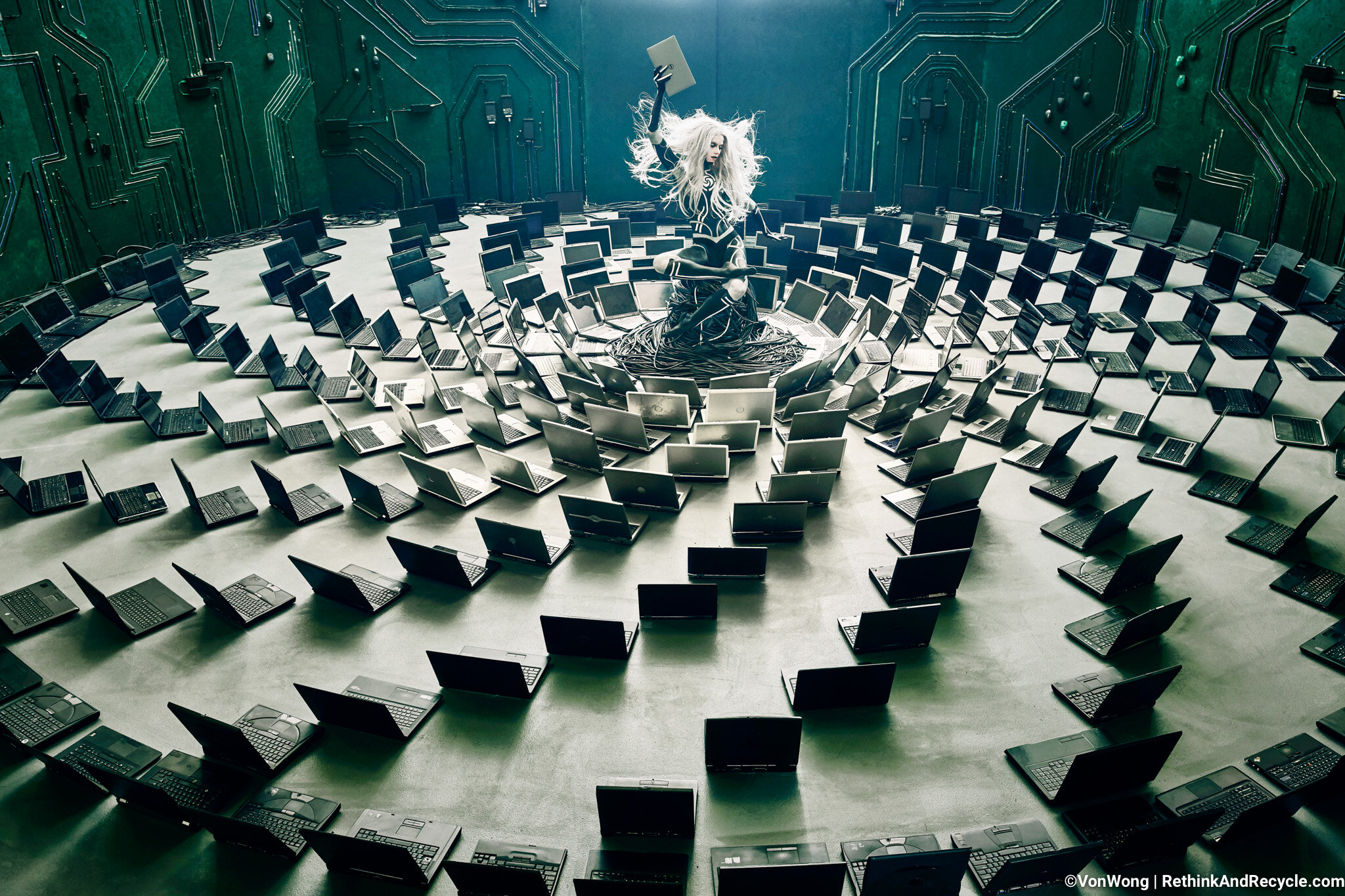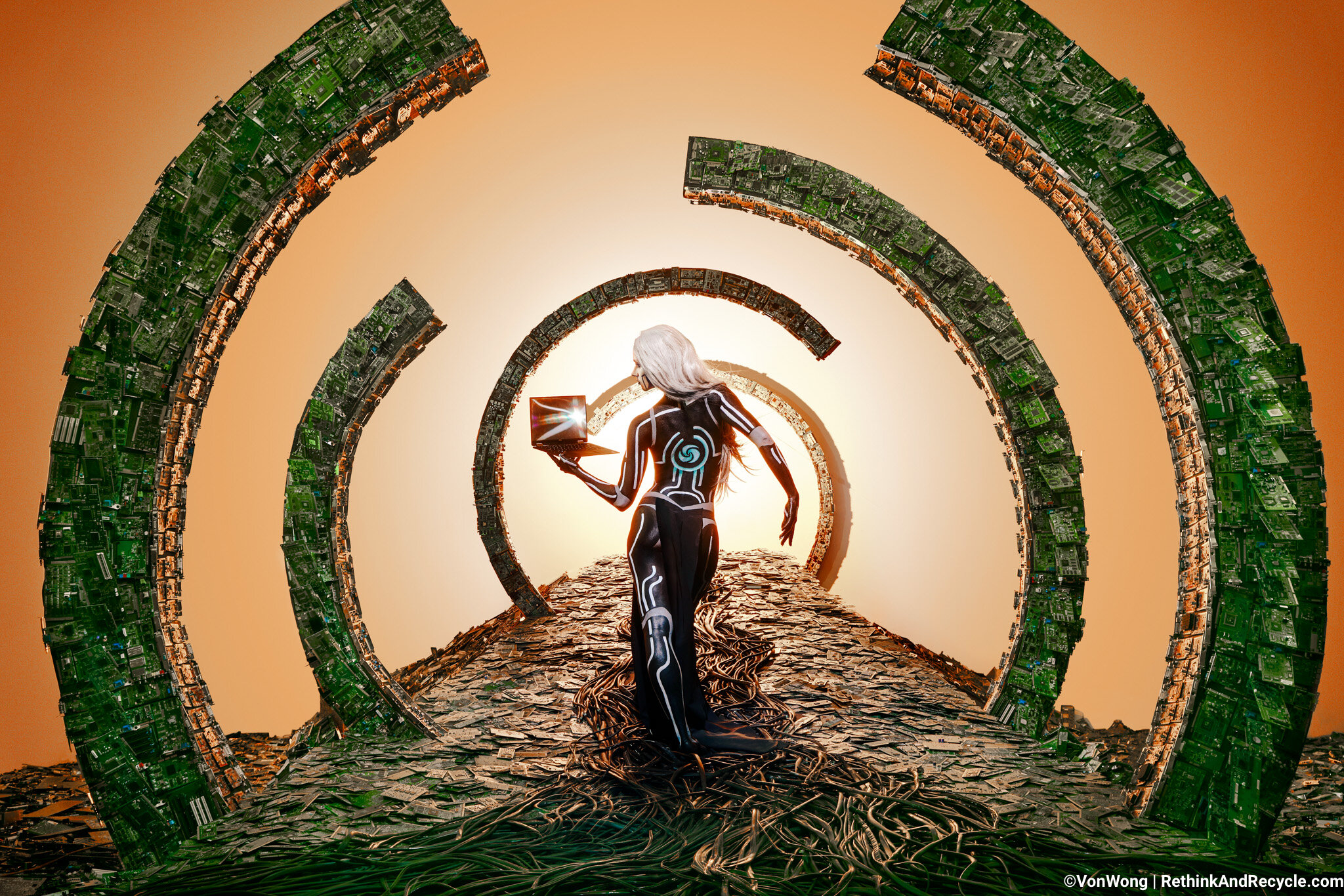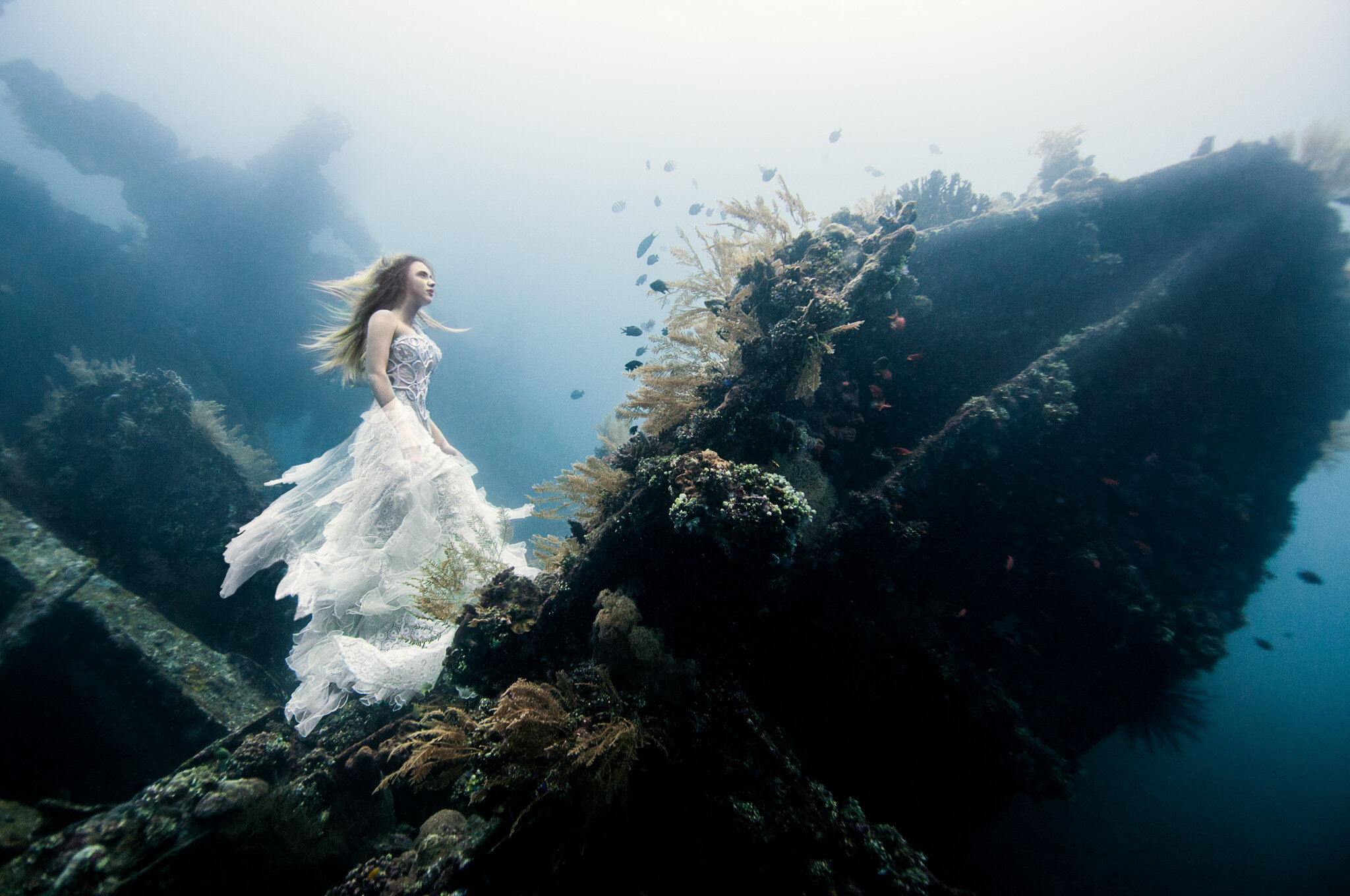AFTER GOING VIRAL, BENJAMIN VON WONG SHARES WHY COMMUNITY MATTERS MORE THAN CLICKS
By Katrina Kirsch
Benjamin Von Wong's work lies at the intersection of fantasy and photography by merging everyday objects with fantastical subjects and shocking statistics. It's attracted the attention of corporations like Starbucks, Delve, and Nike and has generated over 100 million views. Yes, he's gone viral for causes like electronic waste, ocean plastics and fashion pollution—which is why he's been named one of Adweek's 11 branded content masterminds.
Recently, Benjamin was in conversation with Photographers Without Borders (PWB) Founder Danielle Da Silva as part of PWB’s ongoing "Storytelling for Change" webinar series. Below are edited excerpts from their discussion, which touched on Benjamin’s inspiration, creative process, activism and desire to build communities over audiences.
Danielle Da Silva: Can you tell us a bit about your career path and how you've found yourself where you are right now?
Benjamin Von Wong: As I started climbing the ranks of photography, I always dreamed of doing commercial work. But I soon realized that earning money doing something I enjoyed wasn't enough—I was looking for more meaning, more drive, more purpose. Because once you get a big campaign, where do you go from there? You just line yourself up for the next campaign; there's no human development in it.
I almost quit photography at that time, and I went into documentary filmmaking. I started making stories for charities and thought I could have a path creating fundraising videos. But I didn't enjoy it that much, and I wasn't that good at it. So I started wondering, "How might I tie fantasy and impact together? How do I take these two worlds that are really different and smash them together?"
That was a journey, which started off with projects like tying a model underwater and adding a shark in to support shark conservation. Or taking a mermaid, which is in the fantasy world, and finding 10,000 plastic bottles to put her on to raise awareness for plastic pollution. I found different ways to combine causes and fantasy together. Over time, those combinations have become larger and more complex.
Photos by Benjamin Von Wong
Da Silva: I know you've had experience with building community and making a tangible impact versus building an audience. So can you tell us the difference? And why one matters more than the other for you now?
Von Wong: I have about half a million followers on social media that I've built up over a couple of years. What I've realized is that my followers are just waiting for me to create things so that they can consume it, right? They're just waiting for me.
If you're building an audience, you fall under the constraints of having a content schedule to entertain people so they can consume, consume, consume. But they're never going to be satiated and are always going to want the next thing. As a creator, it gets quite draining, especially when you need to constantly ask the questions of why are we creating, what drives me, what am I inspired by?
A community, on the other hand, is different. It thrives on its own and doesn't necessarily depend on any one member to function. People in a community rally together to co-create, to co-inspire, to share discoveries and learnings. There's a sense of shared transformation. If you design a community, the hope is that these one-way conversations thrive into multi pronged conversations—that's when you actually grow.
It's a little like when you go to a conference and hear a person speak. You get inspiration, but it's the connections you make at the conference that drive the lasting change over time. The connections are where you get your resilience and sustainability for your own creative process.
Da Silva: You talked about how your process has shifted. Now, instead of thinking about the grand outcome, what are you trying to affect first?
Von Wong: Every project starts with, why are you doing this? You're not just trying to create content for the sake of creating content. What are you trying to achieve? And asking the right questions, in the beginning, is super important and helpful.
Keep in mind, just because someone went viral once doesn't mean they can go viral again. It also depends on when they went viral. Because what it took to go viral in 2014 is very different than what it took to go viral in 2016, which is super different than today. You might become a genius at Instagram, but then Instagram changes the algorithm. Then what? All those principles you thought you knew no longer are valid, and that's completely out of your control.
That being said, creating good art and stories that resonate can still be timeless in a sense. You just have to adapt them to the medium on which you're going to create.
To learn more about Benjamin's work, follow him on Instagram, listen to his podcast "Impact Everywhere" or view prints on his website.
You can watch Benjamin’s entire interview, including a viewer question period, by becoming a PWB Member. As a Member, you'll be contributing to PWB’s social action initiatives and have full access to dozens of Storytelling for Change webinars with notable photographer storytellers.




